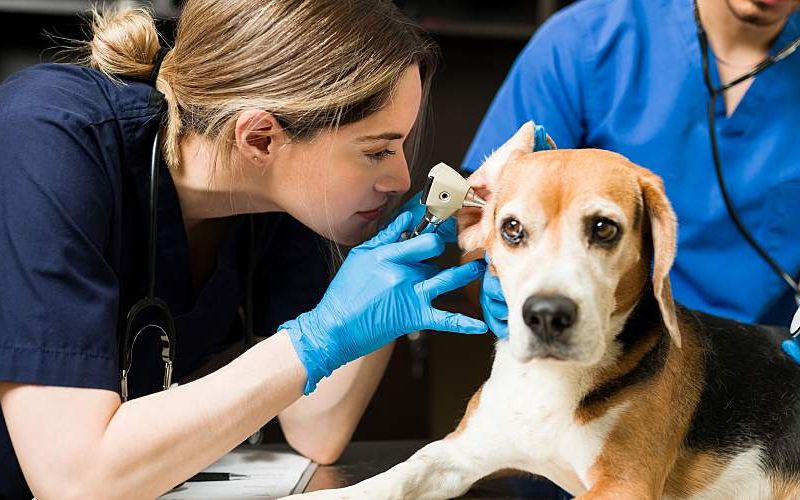Defining Roles and Responsibilities in Your Veterinary Practice


Most veterinary practice teams have undergone significant structural and functional changes in the last few years. As a result, you may have lost several team members, acquired new ones, and altered your daily workflows to accommodate increased or differing client and pet needs.
Here are a few ways to ensure everyone knows what to do, when to do it, and who to ask for clarification.
How to Establish Clear Roles and Responsibilities
Veterinary team roles and responsibilities are likely to become muddled when major restructuring occurs throughout the practice, and this can lead to reduced communication, mistakes, and poor client service. If your team is dropping the ball on important tasks, playing the blame game, or struggling to accomplish projects and goals, re-establishing clear roles can help improve efficiency.
1. Update Job Descriptions
If you don't have complete, written descriptions for each position in your practice, or you haven't updated them in many years, establishing new specifications can help set clear expectations for each person's day-to-day responsibilities. Some job responsibilities may overlap between multiple team members, so this isn't a cure-all solution. However, it gives the team something concrete to refer to and helps new team members understand their jobs. Use the new descriptions to reflect how your practice currently operates, and reassign problematic tasks. Once complete, include all descriptions in the employee handbook for easy reference.
Elevate patient care without overwhelming staff. Learn how.
2. Create an Organizational Chart
For team members to operate efficiently and confidently, they need to understand where to go with questions and concerns, who manages them, and how leadership roles relate to one another. For most teams, the practice owner(s) take the top spot with a final say in finances and major decision-making. Next are the office manager, practice manager, and potentially the medical director.
The next tiers will vary for each practice and may include additional management positions (such as department heads or shift leads), veterinary technicians, client service representatives (CSRs), assistants, and kennel staff in variable relationships to one another. The chart will end up looking more like a web, establishing which leaders each person can turn to for help and identifying the next person in line if the first is unavailable. You can also add your organizational chart to the employee handbook.
3. Appoint More Leaders
If you find that most of the responsibility falls on one or two managers, or your team flounders on days when leadership isn't present, you might consider elevating more team members to leadership positions. For example, if all the veterinary technicians report to one lead tech, but the lead tech only works morning shifts four days per week, appointing additional shift leads can help bridge the gap and provide strong team direction regardless of who is working and when. These leaders provide accountability for others on their shift and ensure everyone works in their defined roles to complete tasks smoothly.
4. Consult Your Team
Hold a team meeting to discuss potential problem areas in the practice. Are drop-off appointments often forgotten about until the end of the day? Are messages from CSRs falling through the cracks and not reaching the doctors? Management is less likely to see these problems than those who are on the floor daily, and team members are more likely to come up with viable solutions to their daily frustrations. Decide as a team, or appoint a committee, to determine how each situation should be handled and who is ultimately held accountable for completing each task.

5. Use the RACI Technique to Establish Protocols
The RACI matrix is a technique used in business management to clearly define each team member's role and ensure a project is completed correctly and on time. For each project or situation, the RACI technique assigns individuals to one of four categories:
- Responsible. These team members actually perform the task. There may be multiple people responsible for a task.
- Accountable. This team member is held accountable for ensuring the task is completed.
- Consulted. These team members are leaders and experts who the responsible and accountable team members can ask for guidance on how to complete their task or solve a problem.
- Informed. These team members do not play a role in completing the task but are kept in the loop about progress, completion, and changes that may follow.
The RACI method can help you determine roles when they are unclear or need restructuring and can be used to write protocols for day-to-day tasks or to complete larger, practice-wide projects. For example, the RACI technique can be used to structure your daily closing procedures and bank deposit. In this example, the responsible parties are the CSRs working the closing shift each day. They can decide between them who will perform which closing procedures. The accountable party may be the veterinarian, manager, or shift lead, who will ensure the CSRs complete their work. The CSRs may consult the manager if they have a problem or question. The informed parties are those responsible for signing off on the deposit—for instance, the practice owner or manager.
Create an Efficient Workplace
Roles and responsibilities in your veterinary practice will likely shift on a regular basis as you evolve and adapt to new situations. Try using these techniques to provide guidance and direction for team members, improve communication, empower leaders, and enable the practice to operate more efficiently.






